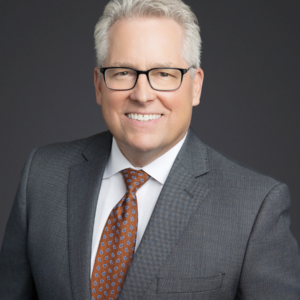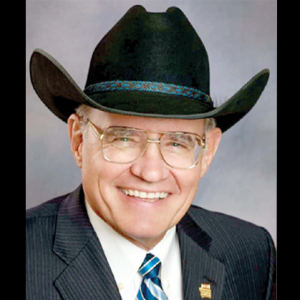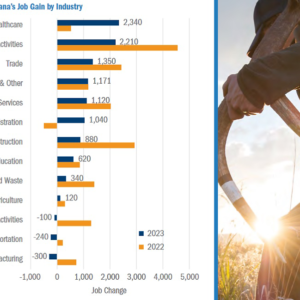Commercial
Yellowstone County|Sletten Construction Companies, 3165 King Ave E, Com Addition, $800,000
Billings Logistics Center One|Bauer Construction, 3218 S Frontage Rd, Com Remodel, $320,000
Ethan Kanning, 425 Henry Chapple St, Com Footing/Foundation, $60,000
Keller Billings LLC |Patriot Construction LLC, 1 1st Ave S, Com New Warehouse/Storage, $56,000
St Johns Foundation |Ben Mitchell Construction LLC, 3940 Rimrock Rd, Com Remodel, $55,000
Miller Richard A|Yellow Ball Roofing & Solar LLC, 713 Main St, Com Fence/Roof/Siding, $35,653
Bresnan Communications LLC|AC Schommer & Sons Inc, 1860 Monad Rd, Com Remodel, $18000
Gracepoint Church Of Billings|KE Construction LLC, 1605 Inverness Dr, Com New Church, $3,500,000
Less Tropican Inn-Vestments 2.0 LLC|Environmental Contractors LLC, 5500 Midland Rd, Demolition, Commercial $182,000
Billings 401 LLC|Automatic Doors Of Montana Inc, 401 N 31st St., Com Remodel, $200,000
Hanser Properties LP|Hanser’s Properties, 529 S Billings Blvd, Demolition Commercial, $5,000
Grand Center LLC|Stronghand Construction LLC, 1212 Grand Ave, Commercial Remodel, $75,000
Rocky Vista University LLC|Langlas & Assoc. Inc., 4130 Rocky Vista Way, Commercial New Other,$9,000,000
Ethan Kanning |Bauer Construction, 425 Henry Chapple St, Com New Restaurant/Casino/Bar, $1,370,000.00
Brad Barker |Old Soldier Equipment Company LLC, 208 N 29th St, Hedden Empire Building 2nd Flo0r Remodel, Com Remodel, $500,000
Shawn Nelson |Langlas & Assoc. Inc., 209 N 29th St, Com Remodel, $247,000
Mike Evans |TW Ridley LLC, 1045 Grand Ave, Com Remodel, $241,200
Charter Communications Inc|A Schommer & Sons Inc, 1860 Monad Rd, Com Fence/Roof/Siding, $130,000
Chilton Wayne A & Celia D|The Mr. Fix-It Network, 1818 Main St, Com Fence/Roof/Siding, $60,000
St. Johns Lutheran Ministries |Ben Mitchell Construction LLC, 3940 Rimrock Rd, Com Remodel, $50,000
Love Properties Llp|Shelving Concepts Inc, 1224 Cordova St, Com Remodel, $36,654
Nelson Investments LLC &|Lennick Bros., 2121 1st Ave S, Com Fence/Roof/Siding, $24,000
Residential
Linde Steven R Trustee &|Image Builders, 2393 Larchwood Ln, Residence Res New Single Family, $1,400,000
South Pine Design |South Pine Design, 5317 S Iron Mountain Rd, Res New Single Family, $600,000
Greg & Lynn Waters |Image Builders, 2505 Buffalo Ridge, Res New Single Family, $407,145
Diverse Construction |Diverse Construction LLC, 2043 Cypress Pt, Res New Single Family, $380,856
Billings Best Builders LLC|Billings Best Builders LLC, 5389 Iron Mountain Rd, Res New Single Family, $325,000
High Sierra Ii Inc|JKC Inc, 969 Matador Ave, Res New Single Family, $242,903
Mccall |Mccall Development, 1829 St Peter Ln, Res New Single Family, $135,109
Mccall |Mccall Development 1825 St Peter Ln, Res New Single Family, $131,659
Mccall |Mccall Development, 1833 St Peter Ln, Res New Single Family, $131,559
Mccall Homes |Mccall Development, 1825 St George Blvd, Res New Accessory Structure, $63,360
Klier, Jeffrey A & Angela T, 2046 Avenue D, Res New Accessory Structure,$ 32,256
Asher Julie K & John E|Image Builders, 1815 Georgia Pine Ln, Res New Single Family, $1,500,000
Wl Zimmerman LLC|Lees Construction & Development LLC, 1802 Charlotte Dr, Res New Townhome, $900,000
Wl Zimmerman LLC|Lees Construction & Development LLC, 1804 Charlotte Dr, Res New Townhome, $900,000
Wl Zimmerman LLC|Lees Construction & Development LLC, 1812 Charlotte Dr, Res New Townhome, $900,000
Wl Zimmerman LLC|Lees Construction & Development LLC, 1814 Charlotte Dr, Res New Townhome, $900,000
Wl Zimmerman LLC|Lees Construction & Development LLC, 1822 Charlotte Dr, Res New Townhome, $900,000
Wl Zimmerman LLC|Lees Construction & Development LLC, 1824 Charlotte Dr, Res New Townhome, $900,000
Wl Zimmerman LLC|Lees Construction & Development LLC, 1902 Charlotte Dr, Res New Townhome, $900,000
Wl Zimmerman LLC|Lees Construction & Development Ll1904 Charlotte Dr , New Townhome $900,000
Wl Zimmerman LLC|Lees Construction & Development LLC, 1912 Charlotte Dr, Res New Townhome, $900,000
Wl Zimmerman LLC|Lees Construction & Development LLC, 1914 Charlotte Dr, Res New Townhome, $900,000
Wl Zimmerman LLC|Lees Construction & Development LLC, 1922 Charlotte Dr, Res New Townhome, $900,000
Wl Zimmerman LLC|Lees Construction & Development LLC, 1924 Charlotte Dr, Res New Townhome, $900,000
Mike Christensen |Michael Christensen Homes, 1241 Olive Ln, Res New Single Family, $450,000
Infinity Home LLC |Infinity Home LLC, 2151 Lakehills Dr, Res New Single Family, $351,421
Infinity Home LLC |Infinity Home LLC, 578 Chino Cir, Res New Single Family, $242,671
McCall Homes |McCall Development, 1830 Norma Jean Sq W, Res New Single Family, $159,607
CDH LLC |CDH LLC, 5232 Rich Ln, Res New Single Family, $339,681
Infinity Home LLC |Infinity Home LLC, 2220 Lindero Blvd, Res New Single Family, $176,872
Infinity Home LLC |Infinity Home LLC, 2214 Lindero Blvd, Res New Single Family, $175,720
Lakeview Loan Servicing LLC|Castellano Enterprises Inc, 3294 Windmill Cir, Res Remodel Single/Duplex/Garage, $80,000
Tonn Bruce, 2907 Montana Ave, Res Remodel Single/Duplex/Garage, $65,000
501 S 35th Mt LLC/ Bobs Home Interior And Exterior, 501 S 35th St, Res Remodel Single/Duplex/Garage, $30,000





